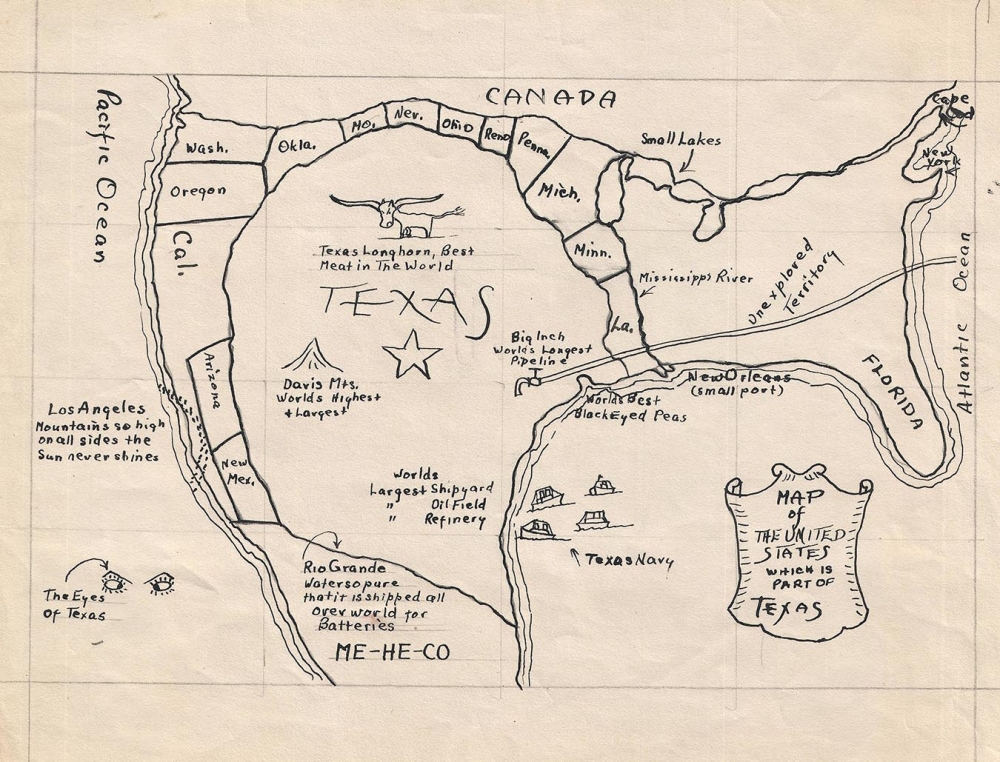1943 Manuscript Map of the United States from the Perspective of Texas
UnitedStatesTexas-anon-1943$450.00

Title
Map of the United States which is Part of Texas.
1943 (undated) 8.25 x 10.75 in (20.955 x 27.305 cm) 1 : 22176000
1943 (undated) 8.25 x 10.75 in (20.955 x 27.305 cm) 1 : 22176000
Description
This manuscript map of the United States circa 1943 humorously illustrates the idea that the United States is, in fact, part of Texas. More poignantly, it plays on pride surrounding Texas's unique contributions to World War II (1939 - 1945), including some of the world's largest shipyards and the Big Inch Pipeline, which safely supplied petroleum to Allied forces, avoiding German U-Boat attacks.
A Closer Look
This manuscript map is in the style of Daniel Wallingford, who pioneered the creation of maps from a social perspective with a comic slant. In this map, a disproportionately large Texas dominates the continental United States. It includes such locations as the World's Largest Shipyard, Oil Field, and Refinery, as well as the Big Inch pipeline to the Atlantic. Texas also possesses its own navy? The other states are relegated to space at the periphery, with Washington, Oregon, and California appearing roughly in the correct geographic location, while states such as Oklahoma, Missouri, Nevada, Ohio, and the new state of Reno, have been relocated to the Canadian border. The United States east of the Mississippi is declared Unexplored Territory, although Florida, New York, and Cape Cod merit labels. Canada and Mexico are also labeled, although Mexico is known as ME-HE-CO.The Big Inch
The Big Inch Pipeline, constructed during World War II, was a monumental feat of engineering designed to ensure a steady and secure supply of oil to the Allied forces. Completed in 1943, this pipeline stretched over 1,200 miles from the oil fields of East Texas to the refineries in Pennsylvania. At the time, it was the longest petroleum pipeline ever built and was a critical part of the war effort, as tanker ships transporting oil along the coast were vulnerable to German U-boat attacks. The construction of the pipeline was a massive undertaking, involving around 3.5 million tons of steel and the labor of tens of thousands of workers. It represented a significant achievement in terms of logistics and engineering, and its successful operation played a key role in fueling the Allied victory in World War II. After the war, the Big Inch and its companion pipeline, the Little Big Inch, continued to be important components of the American petroleum transportation infrastructure.Publication History and Census
The map is undated and unsigned, nor have we found any published examples. Based on the presence of the Big Inch Pipeline, which was constructed between 1942 and 1944, we can deduce a likely date.Condition
Very good.

